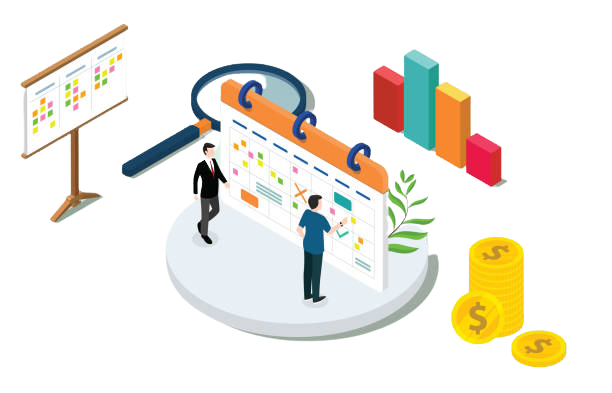The Role of Project Management Tools for Successful Remote Work
Project management is the crucial process for any successful project. Every project has various stages to be taken care of, such as scope of project, planning, executing, monitoring, and closure. As a project manager, it is critical to monitor all the project management activities in the running project. To maintain these activities in a simpler way, project management tools are used to automate various processes that are taking place in a project. These tools are much more helpful to connect the team members in the digital workplace.
Project Management Tools

Project management tool is a software designed to help the team or organization to plan, organize, track, and manage the projects in an efficient manner. This project management software is a wide range of platforms, that ranges from a simple checklist application to a tool that provides an entire overview of the projects. These tools provide centralized information, so that every team member can view the information and can stay updated.
Roles of Project Management Tools
These project management tools are used to streamline a project’s workflow and ensure projects are completed on time and within the estimated budget. It is widely used in most businesses to simplify the risk factors in business process management. As the marketing field deals with end customers directly, the marketing automation tools are widely used to automate and schedule the processes like creating leads, segregating the customers, follow ups, and closing the deal. With a tool, it ensures that each process is done without missing any positive leads.
Various roles of project management tools are task management, collaboration and communication, resource management, time and budget tracking, visible metrics, data centralization, identifying risk factors and report generation.
-
Task management and Planning
Task management is the first step for successful project completion. Project management tools provide automation for the task management process. These tools allow users to create, assign, prioritize modules, set deadlines, and monitor progress. The software uses various methodologies for task management. Among the various methodologies, the two most common are waterfall and agile. In the waterfall method, each step will be in sequential order and team members should complete it one at a time. While the agile method allows the team members to continuously revise the project midstream.
-
Collaboration and communication
Effective communication is essential for the project completion. These tools enable effective communication through messaging, commenting and notifications. Not only can communication be done but also it allows team members to share images, files, and documents in the same application. This feature enables each team member to access the files and documents related to the project at any time they need to.
-
Resource management
Resource allocation is one of the main processes for a successful project. It should be correctly allocated at the beginning stage of the project to avoid confusion and an overload of work for the team members. This tool provides visibility to the available resources, which enables the project manager to assign tasks easily. Also, team members can get a proper vision of the team structure and the workflow. ce the team structure and workflow are clear, the project runs smoothly, and it ensures the chance to get completed on time.
-
Time and budget tracking
Time tracking is the key factor for the project to be completed on time. Project management tools assign time for each module of the project to avoid the work overloading at the last moment. It indicates any lack of time happening in the modules then and there to get focused. So, it becomes easier to identify the lack, why, and where it happened, and it can be rectified at time. As budget calculation is also the crucial thing in the project, this tool provides the facility to track the expenses then and there throughout the project life cycle.
-
Visible metrics
Various metrics are being followed to monitor the ongoing projects that provide clear information about the project’s progress, performance, and outcome. This automation tool provides these metrics as visual representations like charts, to-do lists, and project calendars. These visualizing tools in the software provide information such as project plans, goals, progress, and day-to-day tasks. This visual representation helps the team members to quickly understand what is happening in the project and where more focus is needed.
-
Data centralization
Regarding the successful project, every team member should be able to know the updated status of the project. When using the project management tools, all the related data from the beginning of the project will be stored in a centralized manner. So that each team member can view the project’s status, it helps them gain complete knowledge about it. Since all the data is centralized, missing data during the project execution is low, and it can be accessed whenever needed. This feature is an added advantage of the project management tools that will enhance the project’s implementation successfully.
-
Identifying risk factors
Risk factors such as performance trends, and time and expense calculations must be identified over time to reduce last-minute stress for the team. As all these factors will be available in the visual representations, it becomes easier to track and sort out these risks at once to ensure the project is running on the right pathway.
-
Report generation
Even though the project is running smoothly, it is essential to generate reports regarding the project’s progress, performance, and outcomes. The team can generate customized reports such as status reports, risk reports, and utilization reports as per the stages of the project. This feature provides accountability, and visibility and ensures the team that the project is on track.
Conclusion
Thus, project management tools play a crucial role in streamlining the project workflows, improving communication, identifying risks, and reporting on time. With these automated tools, it becomes much easier to complete projects on time even with the remote working team. The digital workplace makes the implementation of the project more efficient with these various features.
